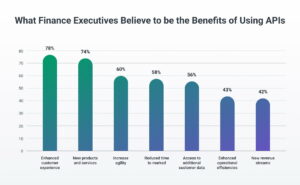
The surge in cybersecurity breaches and financial scams presents a significant challenge and it is an ever-present danger in a sector that is increasingly digitalized. The core issue lies in the anonymity that the digital platforms afford bad actors, creating a complex environment for businesses and individuals alike. This article delves into the role of anonymity in these threats and explores its widespread implications.
The Dark Side of Anonymity in Cybersecurity
Anonymity provides cyber criminals with a cloak of invisibility, allowing them to orchestrate attacks without revealing their identities. This obscurity is a key factor in the execution and success of major cybersecurity breaches. A striking example is the WannaCry ransomware attack. This global threat paralyzed organizations by exploiting weaknesses in their software systems. The attackers, shrouded in anonymity, leveraged these vulnerabilities, causing widespread disruption and panic. This incident, among others, illustrates the profound difficulty in combating cyber threats where the perpetrators are faceless and untraceable.
Challenges in Tracing Anonymous Actors
The task of identifying and pursuing anonymous cybercriminals is fraught with challenges. Law enforcement and cybersecurity professionals often grapple with a scarcity of leads that can be directly tied to an individual or group. Further, cross-border operations of such criminals add another layer of complexity, as international laws and cooperation vary greatly. These factors combine to create a daunting barrier in the fight against cybercrime, where the unknown identity of the attacker becomes one of their greatest assets.
Financial Scams and the Veil of Anonymity
There is also an increase in scams where the perpetrators exploit the anonymity afforded by digital platforms. Phishing attacks and identity theft are classic manifestations of this trend. These scams, often sophisticated and well-orchestrated, leave victims and financial institutions grappling with losses and breaches of trust.
A salient example is the 2016 cyber heist at Bangladesh Bank. Hackers, under the cover of anonymity, attempted a staggering theft of $1 billion, illustrating the scale and audacity of such crimes. This case and others like it underscore the severe impact and complex nature of tracking and prosecuting criminals who effectively hide behind a digital mask.
Tracking and Prosecution Challenges
The anonymous nature of these financial frauds presents significant hurdles in both tracking down the perpetrators and bringing them to justice. The lack of identifiable information, combined with the sophisticated methods used to mask digital footprints, makes it challenging for authorities to trace these crimes back to their source.
Additionally, when such activities cross international boundaries, differing legal systems and the lack of cohesive global cyber laws further complicate the pursuit of justice. As a result, the financial sector continues to wrestle with the daunting task of safeguarding against and responding to anonymity-driven financial scams.
Tangible and Intangible Costs to Businesses
When businesses face anonymity-driven threats, they incur a range of costs. Financial losses are often the most immediate and measurable impact. These losses can stem from funds stolen through fraud or the expenses related to system recovery and strengthening after a breach. Beyond these direct costs, businesses also face intangible consequences.
Consumer trust, once damaged due to a breach or scam, can be challenging to restore. Similarly, a business's reputation may suffer long-term harm, affecting customer loyalty and potential future revenue. These intangible costs can sometimes outweigh the immediate financial losses and have a lasting impact on a business’s success.
Strategies for Mitigating Risks
To combat these risks, businesses must be proactive and strategic. Implementing robust cybersecurity measures is the first line of defense. This includes not only advanced technological solutions but also regular updates and maintenance to prevent vulnerabilities. Employee training is equally important, as human error often plays a significant role in security breaches.
Employees should be educated on best practices for digital security and be made aware of the common tactics used by cybercriminals. Additionally, having a well-prepared incident response plan ensures that a business can act swiftly and effectively in the event of a breach, minimizing damage and restoring operations as quickly as possible. By adopting these strategies, businesses can better protect themselves against the diverse challenges posed by anonymity-driven digital threats.
Technology's Role: A Double-Edged Sword
Technology plays a pivotal role in the landscape of digital threats, serving both as a tool for criminals and a means of defense;
Enhancing Anonymity and Sophistication of Cybercriminals
Technological advancements have inadvertently aided cybercriminals by providing them with sophisticated tools to enhance their anonymity and operational capabilities. The advent of advanced encryption, anonymizing software, and complex malware means that cybercriminals can carry out their activities with a higher degree of secrecy and efficiency. These tools make it increasingly difficult for law enforcement and cybersecurity professionals to track and counteract such threats effectively.
Promising Technological Solutions and Their Limitations
Conversely, emerging technologies like artificial intelligence (AI) and blockchain are at the forefront of combating digital anonymity threats. AI can analyze vast amounts of data to detect patterns indicative of cyber threats, while blockchain's transparent yet secure ledger system offers a new way to secure transactions and data.
However, over-reliance on these technologies is not without its drawbacks. The implementation of such advanced systems can lead to privacy concerns, as they often require the collection and analysis of large volumes of personal data. Additionally, as these technologies evolve, there is always the potential for creating new vulnerabilities that can be exploited by cybercriminals.
Best Practices for Individuals and Businesses
To effectively counter anonymous digital threats, individuals and businesses must adopt a comprehensive and vigilant approach. Some tips include;
Staying Vigilant and Identifying Threats Early
Vigilance is key in protecting against digital threats. This means being aware of the latest types of cyber threats and understanding how they can impact individuals or businesses. Early identification of potential threats is crucial in preventing significant damage. This involves monitoring systems for unusual activities, staying informed about new scamming techniques, and understanding the common signs of a security breach.
Effective Response and Continuous Education
Responding effectively to identified threats is essential. This includes having clear procedures for containing and eliminating threats, as well as plans for recovering from a breach. Equally important is continuous education and awareness. Digital threats constantly changing, and staying informed about the latest developments and protective measures is essential for maintaining security. Regular training sessions for employees, updating security protocols, and engaging with cybersecurity communities can greatly enhance an individual's or business's ability to respond to and recover from digital threats.
Enhancing Internal Security Protocols
Regularly updating and enhancing internal security protocols is a crucial practice. This involves not just installing the latest security software, but also regularly reviewing and updating all security policies and procedures. Regular security audits and vulnerability assessments can help identify potential weaknesses before they can be exploited by cybercriminals. Additionally, implementing multi-factor authentication and ensuring secure network configurations can significantly reduce the risk of breaches.
Collaboration and Information Sharing
Collaboration and information sharing with other organizations and cybersecurity networks can be highly beneficial. Sharing knowledge about threats and defense mechanisms, allows businesses to stay ahead of cybercriminals who benefit from the cloak of anonymity. Participating in industry forums, attending cybersecurity conferences, and engaging in joint cybersecurity initiatives can also provide valuable insights and strengthen overall security postures.
Fortifying Defenses in the Digital Age
The dual threat of anonymity in cybersecurity breaches and financial scams poses significant challenges but also presents opportunities for advancement in digital security practices. As technology continues to evolve, it brings both sophisticated threats and innovative solutions. Businesses and individuals must remain vigilant, continuously educate themselves, and adopt comprehensive security measures. Companies can fortify their defenses through internal protocols, collaborating with peers, and staying informed about the evolving nature of digital threats, we can fortify our defenses against the shadowy challenges of the digital age.
- SEO Powered Content & PR Distribution. Get Amplified Today.
- PlatoData.Network Vertical Generative Ai. Empower Yourself. Access Here.
- PlatoAiStream. Web3 Intelligence. Knowledge Amplified. Access Here.
- PlatoESG. Carbon, CleanTech, Energy, Environment, Solar, Waste Management. Access Here.
- PlatoHealth. Biotech and Clinical Trials Intelligence. Access Here.
- Source: https://www.finextra.com/blogposting/25616/unmasking-digital-threats-the-dual-threat-of-anonymity-in-cybersecurity-breaches-and-financial-scam?utm_medium=rssfinextra&utm_source=finextrablogs
- :is
- :not
- :where
- $1 billion
- 2016
- a
- ability
- About
- Act
- activities
- actors
- add
- Additionally
- adopt
- Adopting
- advanced
- advancement
- advancements
- advent
- affecting
- afforded
- After
- against
- age
- ahead
- AI
- alike
- All
- Allowing
- allows
- also
- always
- among
- amounts
- an
- analysis
- analyze
- and
- Anonymity
- Anonymous
- Another
- approach
- ARE
- article
- artificial
- artificial intelligence
- Artificial intelligence (AI)
- AS
- assessments
- Assets
- At
- attack
- Attacks
- attempted
- attending
- audits
- Authentication
- Authorities
- aware
- awareness
- back
- Bad
- Bangladesh
- Bank
- barrier
- BE
- becomes
- before
- behind
- being
- beneficial
- benefit
- BEST
- best practices
- Better
- Beyond
- Billion
- blockchain
- both
- boundaries
- breach
- breaches
- Bringing
- Brings
- business
- businesses
- but
- by
- CAN
- capabilities
- carry
- case
- causing
- challenge
- challenges
- challenging
- changing
- classic
- clear
- cohesive
- collaborating
- collection
- combat
- combating
- combine
- combined
- Common
- Communities
- Companies
- complex
- complexity
- comprehensive
- Concerns
- conferences
- Consequences
- constantly
- continues
- continuous
- continuously
- cooperation
- Core
- Costs
- Counter
- counteract
- cover
- create
- Creating
- Crimes
- Criminals
- Cross
- cross-border
- crucial
- customer
- Customer Loyalty
- cyber
- cybercrime
- cybercriminals
- Cybersecurity
- damage
- DANGER
- Dark
- data
- Defense
- Degree
- delves
- detect
- developments
- differing
- difficult
- Difficulty
- digital
- digital age
- digital platforms
- direct
- directly
- Disruption
- diverse
- down
- drawbacks
- dual
- due
- Early
- educate
- Education
- effectively
- efficiency
- eliminating
- emerging
- emerging technologies
- Employee
- employees
- encryption
- enforcement
- engaging
- enhance
- enhancing
- ensures
- ensuring
- Environment
- equally
- error
- essential
- Event
- evolve
- evolving
- example
- execution
- expenses
- Exploit
- exploited
- explores
- Face
- faceless
- factor
- factors
- fight
- financial
- Financial institutions
- Financial sector
- Finextra
- First
- For
- forefront
- fortify
- forums
- fraud
- from
- funds
- funds stolen
- further
- future
- Global
- grappling
- greatest
- greatly
- Group
- hackers
- harm
- Have
- having
- heist
- help
- Hide
- higher
- highly
- How
- HTTPS
- human
- Hurdles
- Identification
- identified
- identify
- identifying
- identities
- Identity
- identity theft
- illustrates
- illustrating
- immediate
- Impact
- implementation
- implementing
- implications
- important
- in
- inadvertently
- incident
- incident response
- include
- includes
- Increase
- increasingly
- indicative
- individual
- individuals
- industry
- information
- informed
- initiatives
- innovative
- insights
- installing
- institutions
- intangible
- Intelligence
- internal
- International
- into
- involves
- issue
- IT
- ITS
- joint
- jpg
- just
- Justice
- Key
- key factor
- knowledge
- Lack
- landscape
- large
- lasting
- latest
- latest developments
- Law
- law enforcement
- Laws
- layer
- lead
- Leads
- Leave
- Ledger
- Legal
- leveraged
- lies
- like
- Line
- long-term
- losses
- Loyalty
- made
- maintaining
- maintenance
- major
- make
- MAKES
- malware
- mask
- May..
- means
- measures
- mechanisms
- methods
- minimizing
- mitigating
- monitoring
- most
- multi-factor authentication
- must
- Nature
- network
- networks
- New
- of
- Offers
- often
- on
- once
- ONE
- only
- operational
- Operations
- opportunities
- or
- organizations
- Other
- Others
- our
- out
- overall
- Panic
- participating
- patterns
- peers
- personal
- personal data
- phishing
- phishing attacks
- pivotal
- plan
- plans
- Platforms
- plato
- Plato Data Intelligence
- PlatoData
- plays
- policies
- posed
- poses
- possible
- potential
- practice
- practices
- presents
- prevent
- preventing
- privacy
- Proactive
- procedures
- professionals
- profound
- PROSECUTION
- protect
- protecting
- Protective
- protocols
- provide
- provides
- providing
- pursuing
- pursuit
- quickly
- range
- ransomware
- Ransomware Attack
- Recover
- recovering
- recovery
- reduce
- regular
- regularly
- related
- remain
- reputation
- require
- Respond
- responding
- response
- restore
- restoring
- result
- revealing
- revenue
- reviewing
- Risk
- risks
- robust
- Role
- s
- safeguarding
- Scale
- Scam
- scams
- Scarcity
- sector
- secure
- security
- Security audits
- security breaches
- Security Measures
- security policies
- Security software
- serving
- sessions
- severe
- sharing
- should
- shrouded
- side
- significant
- significantly
- Signs
- Similarly
- Software
- Solutions
- some
- sometimes
- sophisticated
- sophistication
- Source
- staggering
- stay
- staying
- Stem
- stolen
- Strategic
- strategies
- Strengthen
- strengthening
- success
- such
- surge
- swiftly
- system
- Systems
- tactics
- Task
- techniques
- technological
- Technologies
- Technology
- that
- The
- The Landscape
- theft
- their
- Them
- themselves
- There.
- These
- they
- this
- threat
- threats
- Through
- Tied
- tips
- to
- tool
- tools
- trace
- Tracing
- track
- Tracking
- Training
- Transactions
- transparent
- Trend
- Trust
- types
- under
- underscore
- understanding
- unknown
- untraceable
- unusual
- Updates
- updating
- used
- Valuable
- vary
- Vast
- victims
- volumes
- Vulnerabilities
- vulnerability
- Way..
- we
- weaknesses
- WELL
- when
- while
- WHO
- widespread
- with
- without
- yet
- zephyrnet












